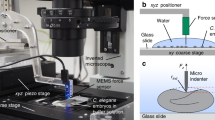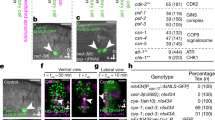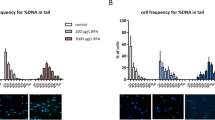Abstract
ETHIDIUM bromide (EB) forms complexes with DNA by intercalation between adjacent bases1 and this property makes it a useful agent for developmental studies. Some effects of EB on amphibian and echinoderm development and on regeneration in Acetabularia have already been described2. We have also reported that EB, at relatively high concentrations (50–100 µg/ml.) and short exposure intervals, stops the prophase condensation of the chromatin of sea urchin eggs and inhibits amino-acid incorporation and DNA synthesis3. These observations led to a more-detailed biochemical study of the effects of EB on developing sea urchin embryos. We now report that continuous exposure to low concentrations of EB (15 µg/ml.), which blocks the development of sea urchin embryos at the beginning of gastrulation2, reduces the incorporation of amino-acids into acid insoluble material during the formation of the blastula and almost completely inhibits the synthesis of ribosomal RNA; no formation of poly-ribosomes can be demonstrated in treated embryos.
This is a preview of subscription content, access via your institution
Access options
Subscribe to this journal
Receive 51 print issues and online access
$199.00 per year
only $3.90 per issue
Buy this article
- Purchase on Springer Link
- Instant access to full article PDF
Prices may be subject to local taxes which are calculated during checkout
Similar content being viewed by others
References
Balis, E. M., Antagonists and Nucleic Acids (North-Holland Publishing Company, Amsterdam, 1968).
Brachet, J., Nature, 220, 488 (1968).
Vacquier, V. D., and Brachet, J., Nature, 222, 193 (1969).
Hinegardner, R. T., Rao, B., and Feldman, D. E., Exp. Cell Res., 36, 53 (1964).
Kirby, K. S., Biochem. J., 96, 266 (1965).
Giudice, G., Mutolo, V., and Donatuti, G., Roux' Archiv., 161, 118 (1968).
Gross, P. R., Kraemer, K., and Malkin, L. J., Biochem. Biophys. Res. Commun., 18, 569 (1965).
Gross, P. R., Malkin, L. J., and Moyer, W. A., Proc. US Nat. Acad. Sci., 51, 407 (1964).
Piko, L., Blair, D. G., Tyler, A., and Vinagrad, J., Proc. US Nat. Acad. Sci., 59, 838 (1968).
Slonimski, P., Perrodin, G., and Craft, J. H., Biochem. Biophys. Res. Commun., 30, 232 (1968).
Meyer, R. R., and Simpson, M. V., Biochem. Biophys. Res. Commun., 34, 238 (1969).
Waring, M. J., J. Mol. Biol., 13, 269 (1965).
Author information
Authors and Affiliations
Rights and permissions
About this article
Cite this article
VACQUIER, V., CLAYBROOK, J. Biochemical Consequences of Ethidium Bromide Treatment of Sea Urchin Embryos. Nature 224, 706–707 (1969). https://doi.org/10.1038/224706a0
Received:
Issue Date:
DOI: https://doi.org/10.1038/224706a0
Comments
By submitting a comment you agree to abide by our Terms and Community Guidelines. If you find something abusive or that does not comply with our terms or guidelines please flag it as inappropriate.



